Melbourne should have been the end of it.
It is the city on the opposite side of this rock to Darwin and a logical finishing line for anyone wishing to say they’ve crossed Australia on a bicycle: another continent checked off, a bigger number on my odometer, a pat on the back and a pint.
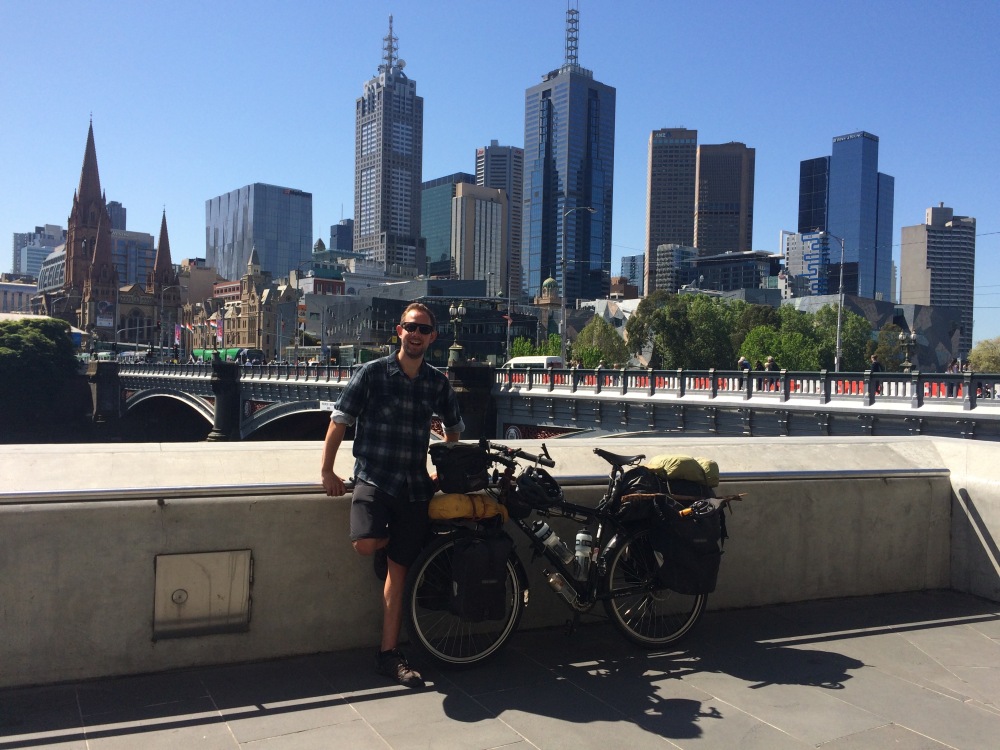
It wasn’t.
I missed the outback. That had been Australia for me. It had been an amazing challenge that taught me patience through its sheer size and emptiness; gave me solitude by letting me camp in places where I was the only person from where I stood to the horizon; and was the antidote to the sensory overload of Asia: out there, amongst the vast expanses of nothingness, your senses are elevated and you find the beauty in not much at all.
I crossed any symbolic finish line much earlier, way back when the rusty, orange dust of the outback gave way to farmland, people, Woolworths, traffic, and meat pies and flat whites for second breakfasts. What followed, through the vineyards of South Australia and the Great Ocean Road, was more of a postscript to the great Australian adventure. It was a shock to the system being somewhere with so many other people, whether its tourists you have to elbow out of the way at any attraction or whether it’s the sudden increase in drivers on the road, that all seem opposed to your wish to live to see 30. The problem with civilisation is that, in spite of all it’s comforts and convenience, you have to share it with everyone else and I hadn’t gotten used to this hard truth by the time I reached Melbourne. Like a diver returning too quickly to the surface, there hadn’t been a gradual transition from one extreme of pressure to the other, from complete emptiness to Australia’s densely populated Southeast during the half term holidays.
I needed something in between these extremes. So when I had been told about a quiet island, just a ferry ride away from Melbourne, that offered white sandy beaches on one side and mountainous, dense wilderness that is completely untouched by civilisation on the other, I bought myself a ticket to ‘Australia’s New Zealand.’
After three weeks and a loop around the island, I can safely say that this amazing island cured my case of the bends, but three weeks was certainly not enough.
Three weeks in Tasmania is not enough time when the entire East coast is full of these:
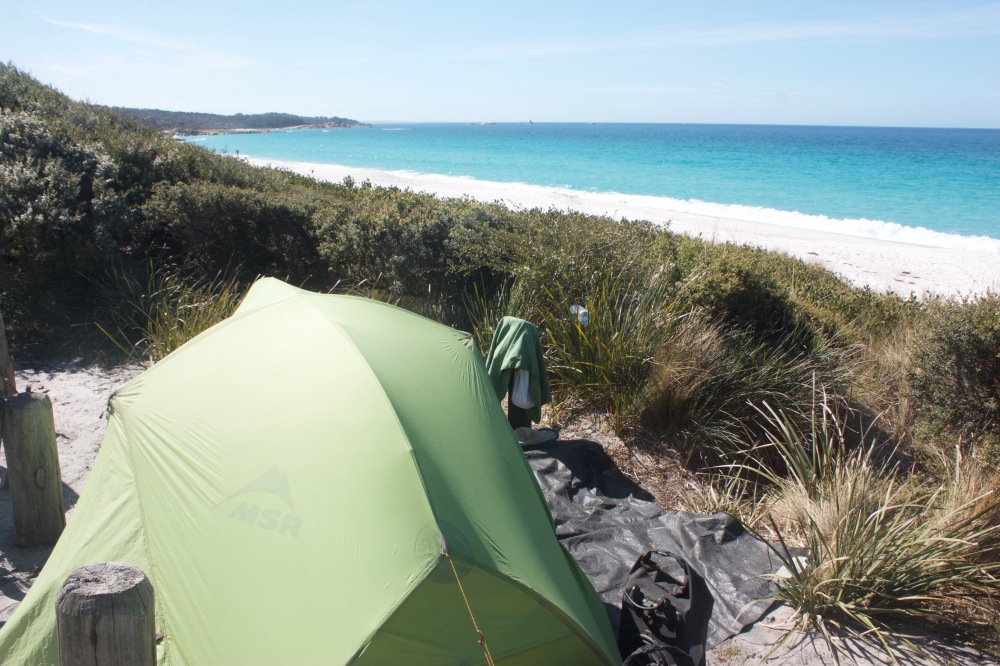

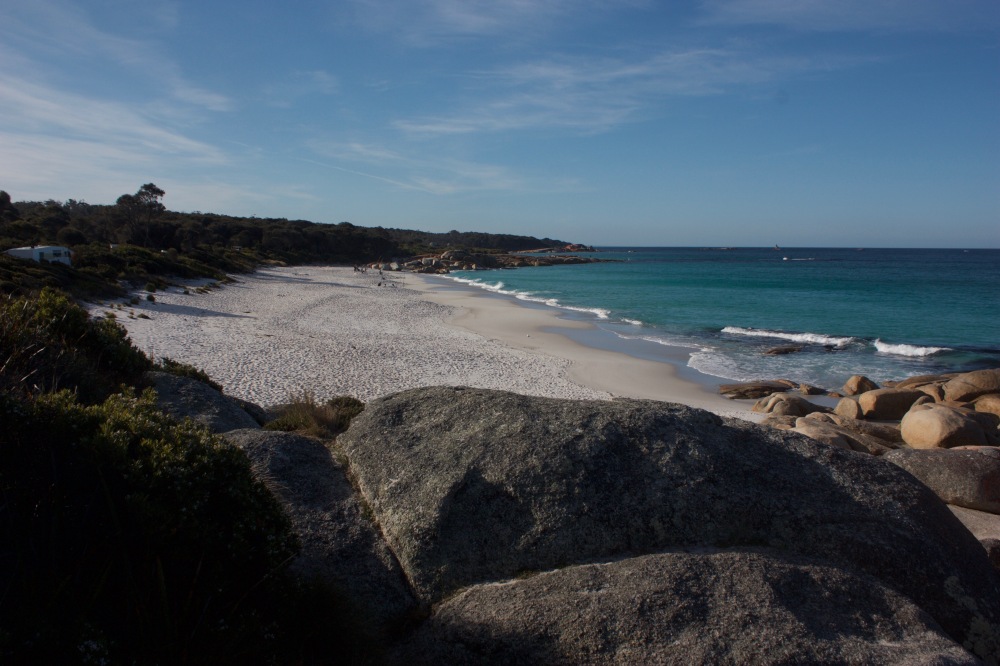

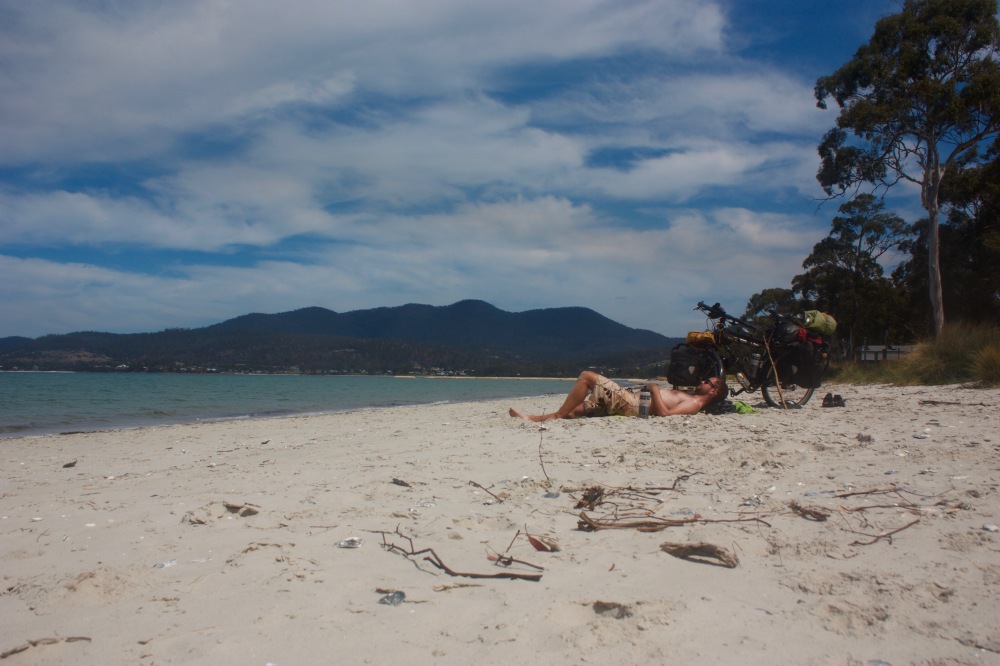
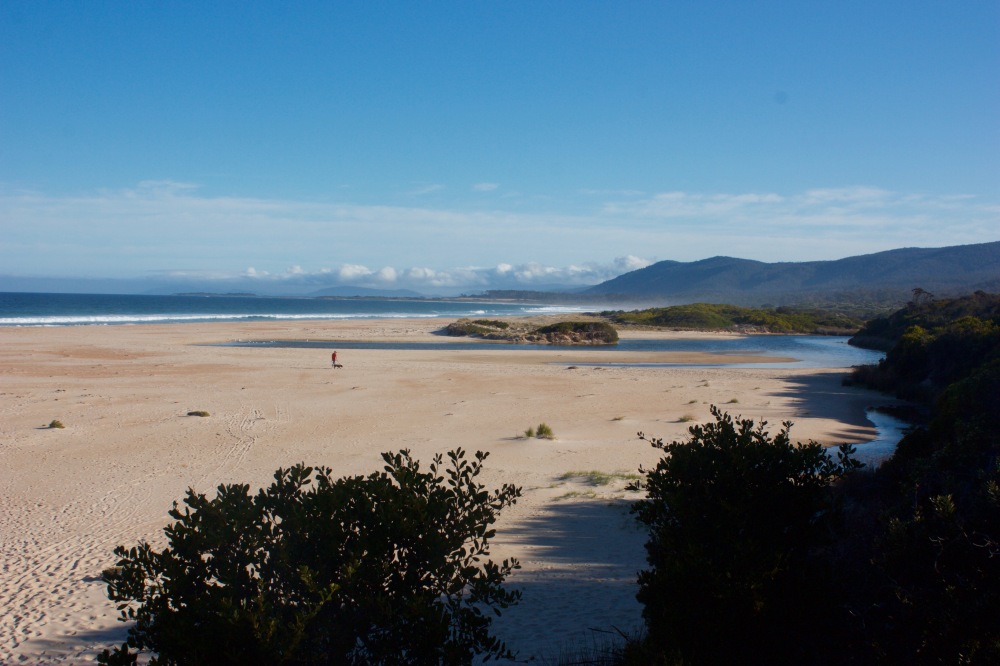
These beaches, with their white sand, turquoise water and red algae clinging to the rocks seem to have the sole purpose of preventing any distance being covered in a day. Every day on the East Coast the road would lead me to some elevated bit of headland that would open up another tempting view of waves crashing on a gleaming white strip of sand. That view would usually mark the beginning of an extended, 3 hour lunch break and would eventually evolve into a pre-emptively halted day of cycling. Tasmania is full of free campsites and on the eat coast nearly every one of these beautiful beaches had a place I could legitimately put up my tent mid-afternoon, instead of the usual wild camping tactic of waiting until dusk. Spring had only really begun down here, too, and so many of these pristine beaches were all mine.
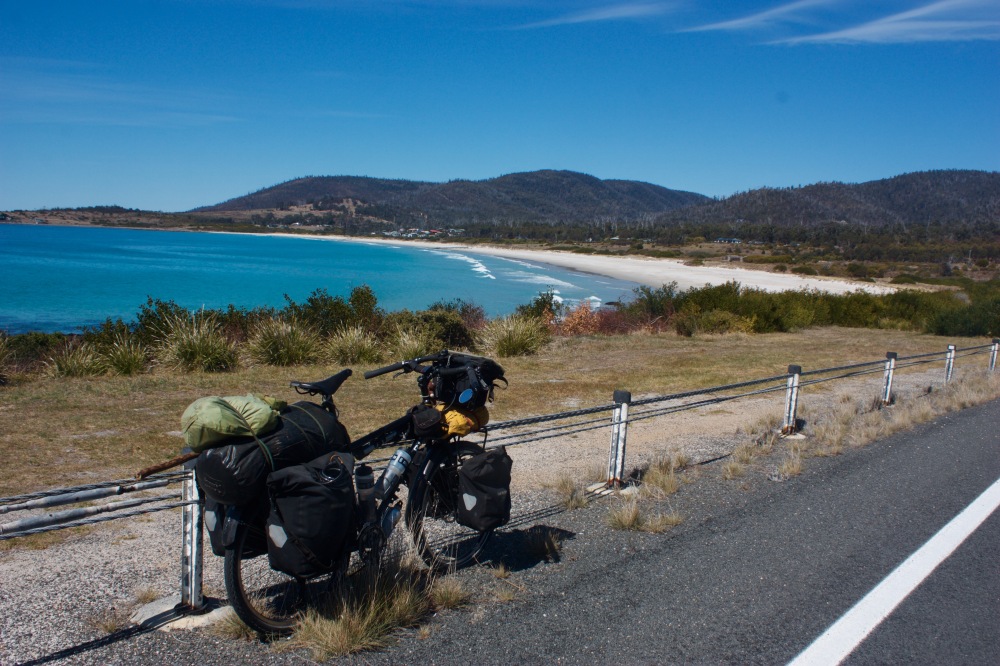
I eventually forced myself off the sand and pedalled into Hobart, a charming city that’s big enough to be interesting and yet small enough to be manageable. Nestled in the shadow of Mount Wellington (providing a 1000 metre climb right on your doorstep), its brewery-to-population ratio and the fact that there are more outdoor gear shops on the highstreet than fashion chains make it a certainly high ranking list of cities I could live in.
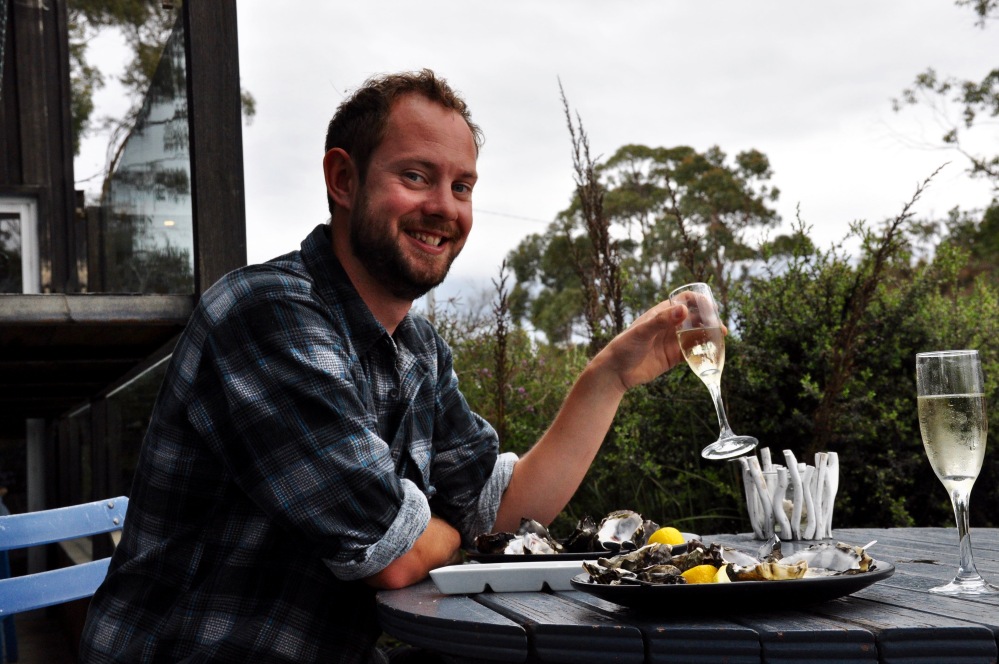
I forced myself from some rather exceptional hospitality in Hobart and hit the hills of the West. This is why Tasmania gets its reputation as a mini version of its neighbour to the East. After riding beyond the rolling pastures I lost myself in forest and protected national parkland that makes up a huge chunk of the island’s landmass. After passing Derwent Bridge, the epicness (and gradients) were turned up to elven.
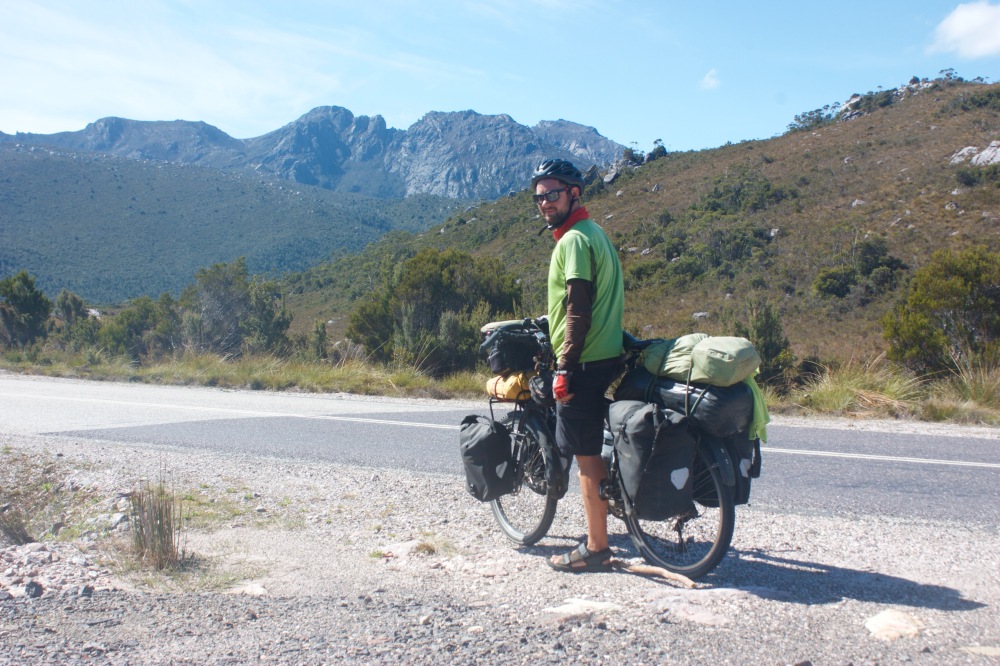
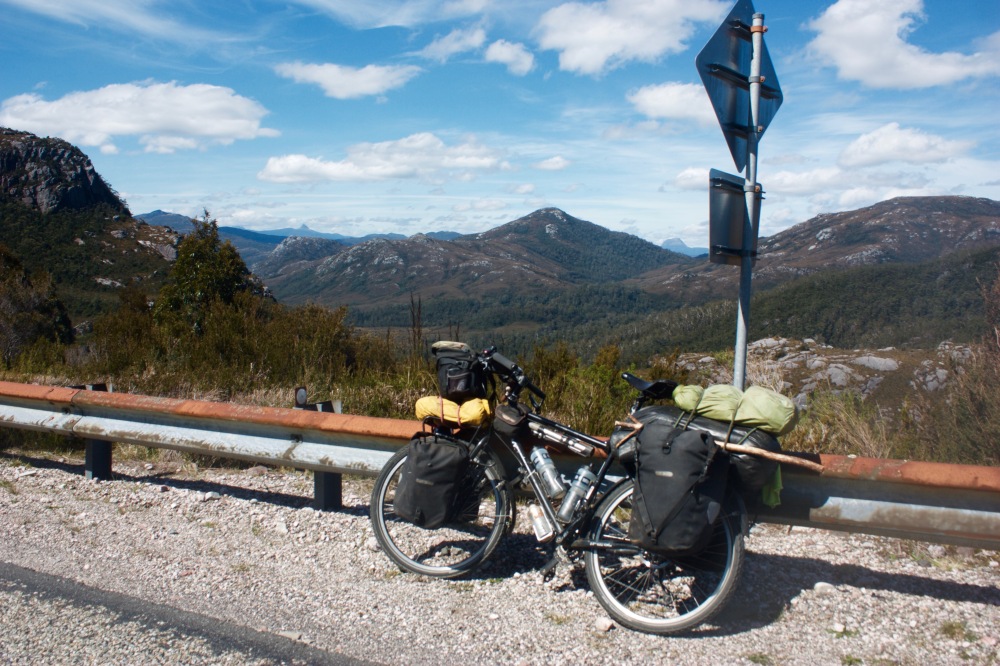



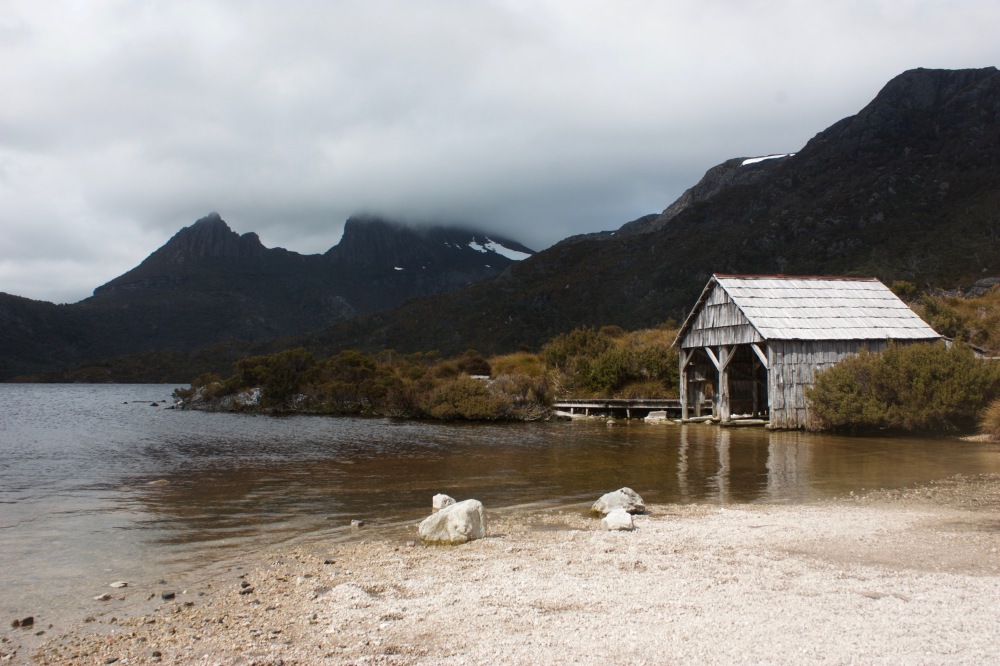
That, unfortunately, was the problem. The landscape is better to look at than to cycle over and the few roads that manage to get into the depths of this wilderness either are dead ends or do so with some seriously gravity-defying climbs that make life a little hard for someone carrying everything but the kitchen sink (only recently discarded in Japan) on their bike. It was again a struggle to make the distance, but this time legitimately and not due to temptation of white sandy beaches. Getting the distance done sapped too much of my energy to explore off the bitumen in the time I had, but that was all right; in my head I had to come to terms that my dirt road days downunder were numbered.
This island provided the happy medium: smooth, relatively quiet roads that still take you into the wilderness. A perfect balance between the outback and the bustle of the mainland’s Southeast. It was the decompression chamber I needed.

So very happy you are still enjoying our country!! Happy trails!!!!
LikeLike
It’s been amazing to discover how diverse this place is: not all just a choice between red dust and beaches!
LikeLike
Hi Nick, really enjoyed reading this blog. Glad to hear you are savouring the landscapes! ⛺️Xx
LikeLike
Good read mate, glad to hear you enjoyed what Tassie has to offer, hope there’s enough fuel in your tank for your next adventure 😁👍
LikeLike
Thanks Sam! Your pics from Mt. Field make me want to return with a pair f walking boots!
LikeLike
Hi Nick, So glad you enjoyed ‘decompressing’ in Tasmania! I really enjoyed your visit – great to find another person completely obsessed with maps and geography! Thank you for writing such a great blog about Tasmania – you captured the essence of the island perfectly. Come back any time!
LikeLike
Wow, great writing, and you totally captured the spirit of Tasmania that we all feel- (we just can’t put pen to paper) .
Should you need bike lodgings in Sydney- then please contact me via Lindsay!
LikeLike
Hi Helena, thanks very much for the kind words and for the offer of bike storage! I’ll be in touch once I speak with my friends’ colleague who apparently has a garage.
LikeLike
Hi Nick, yes it is a land of contrasts and that goes for the people that inhabit that contrast as well. Australians seem to be either coastal city dwellers with all the trappings of modern technology or living as far from the madding crowd as possible (as population demographics demonstrate), but there is a subculture that lives between the contrasts. Those who seek the same solitude that you describe, but at the fringes of cities in smaller communities and at a less frenetic pace of life. Briggs Myers would possibly classify these most likely to be INFJ/INFP/INTJ/INTP.
With more time for a contemplative life surrounded by and enthralled with the quiet detail of the natural bush and its wildlife and the people living in it, even only 80km from the heart of a big city.
Yes you will find vistas with not a person or human sound in evidence, but if you look closely you may see where they have been. It’s also the people that make these places special, either by their absence or their presence. The people that went before us to explore and map these places or who lived there before white settlement. I find myself in a contemplative mood!
Pedal down, peddle up. Happy trails Nick.
LikeLike